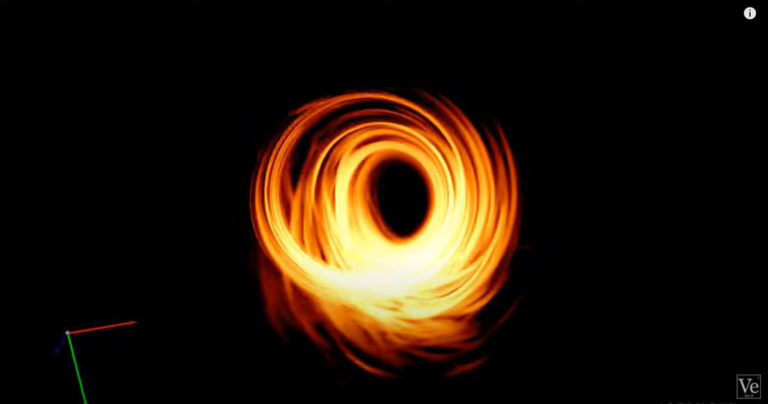Nietzche once cautioned against staring into an abyss for too long, because eventually, the abyss stares right back. That’s what astronomers from NASA must have felt like when they finally glimpsed the magnetic fields that were theorized to tangle around a black hole.
The “black image”, as it’s being called, was taken by the Event Horizon Telescope, a highly specialized network of advanced telescopes designed specifically to stare into black holes and figure out what exactly makes them tick. The black image is one of the first images of a black hole’s event horizon, where hot, glowing gases are illuminated by the black hole’s magnetic field.
This particular black hole is a supermassive black hole located at the heart of Galaxy M87, and the black image is crucial because it helps scientists understand not just what makes black holes work, but also because it allows us a way to take photos of black holes in general.
The Black Image: Helping Take Photos of Black Holes
The black image is crucial because it allows scientists to take photos of black holes. Here’s the scary thing about black holes: we know they exist, there is overwhelming evidence of their existence, we see what happens to stars and planets that wander too near it. But despite this, we can’t actually see them, although, thanks to Einstein’s predictive theories on gravitational waves, we are able to detect them.
Think of black holes as less of an object and more a point in space: when a supermassive star dies, its sheer mass forces it to collapse into itself. This creates a gravitational anomaly so powerful that it sucks in everything, including light, which is why scientists have had to rely on taking photos of objects surrounding a black hole, rather than the black hole itself.
In 2019, scientists were able to take the first known photograph of a black hole, the one found in the center of Galaxy M87. However, it wasn’t the actual black hole itself: rather, it was a photo of the black hole’s shadow against its accretion disk. The accretion disk is a bright spot of superhot gas that swirls and spirals around the center of a black hole; basically, it’s the last remnants of photons before they’re sucked into the abyss.
The black image, taken in March of 2021, is the first actual photo of a black hole, or rather, the first photo of the magnetic field generated by the hot, glowing gases that surround it, thanks to new tech that combines AI, imaging, and the most advanced network of specialized telescopes in the world. It’s the closest we can get to take a photo of a black hole, mostly because the center of it is, in the most empirical sense, a complete and utter void.
This ‘black image’ is significant because it allows scientists to further study the way black holes wolf down matter and then jettison out plasma from its gaping maw, with some of this discharge being launched thousands of light-years away into deep space.
The Black Image: Helping Scientists Understand Black Holes
The black image isn’t actually just one photo, but rather, a collection of both images and data collected since 2017. The image itself was taken by the Event Horizon telescope in March of 2021, but it was correlated with data derived from the 2019 photo and data collected from M87 back in 2017.
Using data from the previous 2 images, scientists were able to apply what they’ve learned in processing the black image and considering new analyses, with the most important being the polarization of light waves. This is important because the polarization of light creates a sort of road map for scientists to follow. This polarization map is what allowed scientists to trace around the edge of M87’s black hole, allowing them an insight into the anomalies underlying magnetic field.
With the black image, scientists found something surprising: some of these magnetic fields actually loop around the black hole, with some of the magnetic field lines actually pointing directly away from the center. This means that, despite their terrifying reputation, black holes aren’t inescapable after all.
While the nature of the magnetic fields that scientists found using the black image have yet to be studied in full, they’ve theorized that they must be extremely powerful for them to be able to carry gaseous matter away from a black hole’s center, and by measuring how fast these clouds of gas move, scientists are able to create a working theory on just exactly how powerful it is.
The scientific community is excited as to what sort of new insights they can glean from all of this new information. It seems that, though the abyss did stare back, it allowed us to understand it even further. Now, if only dark matter would do the same!




